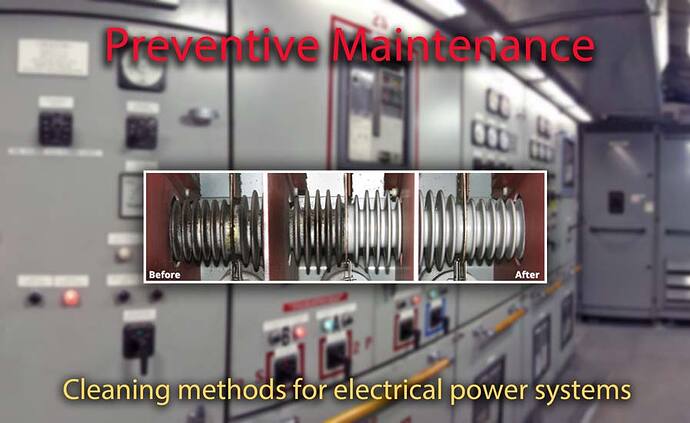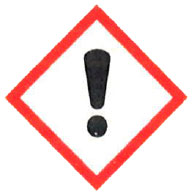When it comes to safeguarding the reliability and longevity of electrical power systems, cleanliness plays a pivotal role in preventive maintenance. Yet, ensuring the proper upkeep of these systems involves more than just a casual wipe-down.
Understanding the right cleaning methods is essential for preserving their efficiency and durability. In this article, we delve into several aspects of cleaning methods for electrical power systems’ preventive maintenance, shedding light on the practices that can keep your electrical systems in peak condition.
Initial Considerations
-
Determine the cleaning method to be used by observing the type of contamination to be removed and the time allowed until the equipment needs to be returned to service.
-
Sufficient dry time is required when using liquid solvents or water to clean electrical power equipment. The insulation resistance should be measured to determine whether it has been properly reconditioned before re-energizing equipment.
Related: Insulation Resistance Test Methods, A Beginners Guide
DANGER: Never attempt to clean electrical power equipment while its energized. Remember to observe all safe work practices and lockout/tag out procedures prior to cleaning. Electrical maintenance personnel should be properly qualified before cleaning electrical equipment.
Methods of Cleaning Electrical Apparatus
Various methods are available for cleaning electrical equipment, with the most suitable choice depending on factors such as the type of apparatus and the operating environment. Regardless of the method chosen, it is crucial to follow manufacturer guidelines, industry standards, and safety protocols when cleaning electrical equipment.
1. Rags and Brushes
Wiping off dirt with a clean, dry, lint-free cloth or soft brush is usually satisfactory if the apparatus is small, the surfaces to be cleaned are accessible, and only dry dirt is to be removed. Use care to avoid damage to delicate parts. Rags can easily catch on edges and other sharp objects, which could damage small plastic or moving parts.
Don’t use waste rags when cleaning electrical equipment because lint will adhere to the insulation, acting as a further dirt-collecting agent, which can cause tracking. Cloth rags should be clean and free of oil, grease, and metallic deposits.
2. Liquid Solvents and Water
Accumulated dirt, oil, or grease might require a solvent to be removed. A rag barely moistened (not wet) with a nonflammable solvent can be used for wiping. Solvents used for cleaning electrical equipment should be selected carefully to ensure compatibility with the materials being cleaned.

Accumulated dirt, oil or grease might require liquid solvents or other alternative methods to be removed. Photo Credit: Wickens Dry Ice Blasting
Do not use any liquid cleaners, including spray cleaners, unless specified by the equipment manufacturer, because of the risk of residues causing damage, interfering with electrical or mechanical functions, or compromising the integrity of insulation surfaces.
Allow sufficient time for drying after cleaning equipment with a liquid solvent or water!
Observe all material data sheets prior to using chemical cleaners. Wear the required personal protective equipment (PPE), such as goggles, gloves, aprons, and respirators, when working with potentially hazardous solvents.

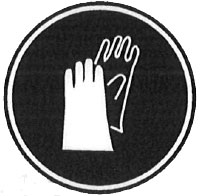

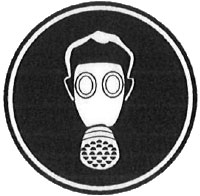
Related: Globally Harmonized System for Hazard Communication
3. Vacuum Cleaning
Loose dust, dirt, and particles can be removed using a vacuum-type cleaner with non-metallic attachments and hoses. Blowing equipment out with compressed air is likely to spread contamination and damage insulation.
Equipment enclosures and substation room filters should be cleaned at regular intervals and replaced if they are damaged or clogged. Loose hardware and debris should be removed from the enclosures. Any new or unusual wear or loss of parts occurring after cleaning can be detected during subsequent maintenance.
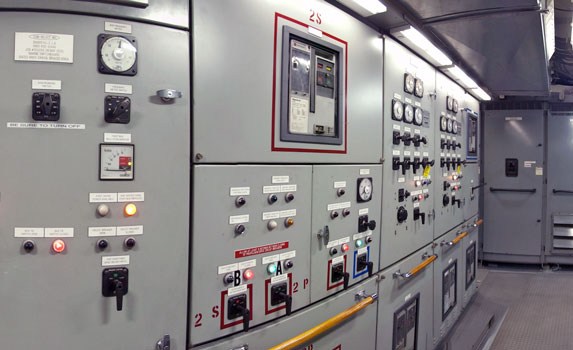
Electrical equipment should be kept clean for maximum efficiency and service longevity. Photo Credit: Andrew Barna, flickr (CC).
4. Sweeping and Moping
If sweeping a substation room is required, use a sweeping compound to limit the amount of dirt and dust becoming airborne. When mopping, keep the mop bucket as far as practical from the switchgear to prevent damage from spillage.
Compressed Air Methods for Cleaning Electrical Equipment
Where dirt cannot be removed by wiping or vacuuming, compressed air blowing might be necessary.
CAUTION: Cleaning with compressed air can create a hazard to personnel and cause equipment to fail or malfunction. If compressed air is used, protection should be provided against injury to workers' faces and eyes from flying debris and to their lungs from dust inhalation.
The use of compressed air should comply with OSHA regulations in 29 CFR 1910.242(b), “Hand and Portable Powered Tools and Other Hand Held Equipment,” including limiting air pressure for such cleaning to less than a gauge pressure of 208.85 kPa (30 psi) and the provision of effective chip guarding and appropriate personal protective equipment.
Use care when working with compressed air to avoid contaminants from becoming airborne, which can contaminate insulation surfaces, cause injury to personnel, or affect the mechanical operation of nearby equipment. Compressed air should be dry and directed in a manner to avoid further blockage of ventilation ducts and recesses in insulations.
Protection might also be needed against contamination of other nearby equipment if the insulation is cleaned in place with compressed air. Remove the apparatus to a suitable location for cleaning, or other exposed equipment should be covered before cleaning starts to keep the debris out.
Sandblasting and Shot Blasting
Electrical equipment might require cleaning by nonconductive sandblasting. Shot blasting should not be used.
Abrasive blasting operations should comply with OSHA regulations in 29 CFR 1910.94(a), “Occupational Health and Environmental Control — Ventilation.” Use personal protective equipment to protect the face and eyes from abrasives and flying debris, and the lungs from dust inhalation.
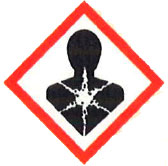 Asbestos Exposure
Asbestos Exposure
Asbestos is a toxic substance subject to government regulations. Special considerations should be taken when cleaning aged equipment that may contain asbestos, especially when using compressed air methods. Knowledge of government regulations is required for handling asbestos and other such materials.
Dry Ice Blasting
Dry Ice Blasting has been found to be non-conductive, making it safe for use on most types of electrical equipment, including generators, turbines, boilers, and steam generators. The results of this cleaning method are also instant, as the ice pellets melt upon impact and leave no residue.
Traditional cleaning methods, such as sandblasting and high-pressure water cleaning, have proven to be environmentally harmful and potentially damaging to equipment. In contrast, Dry Ice Blasting offers a revolutionary solution that is safe, efficient, and eco-friendly.
One of the key advantages of Dry Ice Blasting is that the ice pellets sublimate upon impact, meaning they transition from a solid state to a gas without going through a liquid stage. As a result, no secondary waste is generated, and there is no need for disposal or drying. This makes Dry Ice Blasting a more environmentally friendly solution compared to traditional methods.
